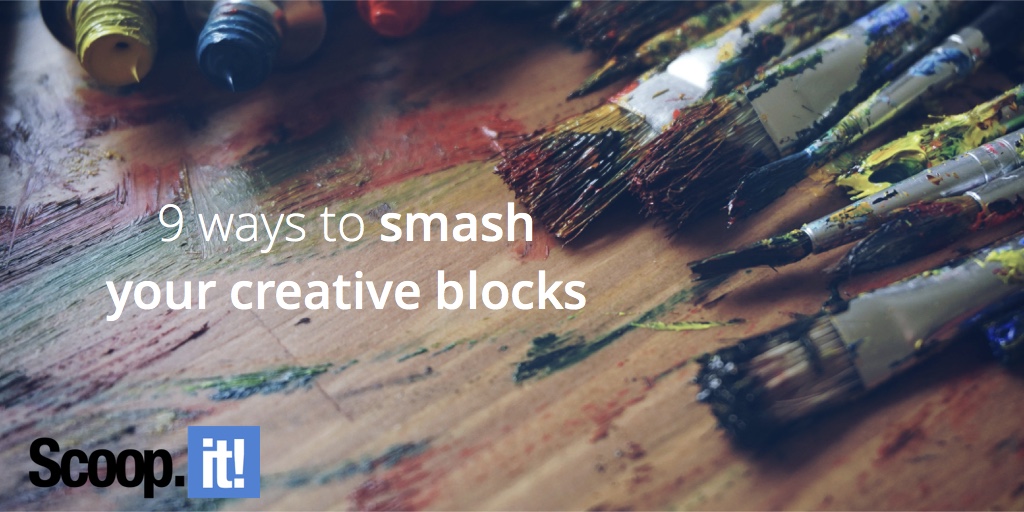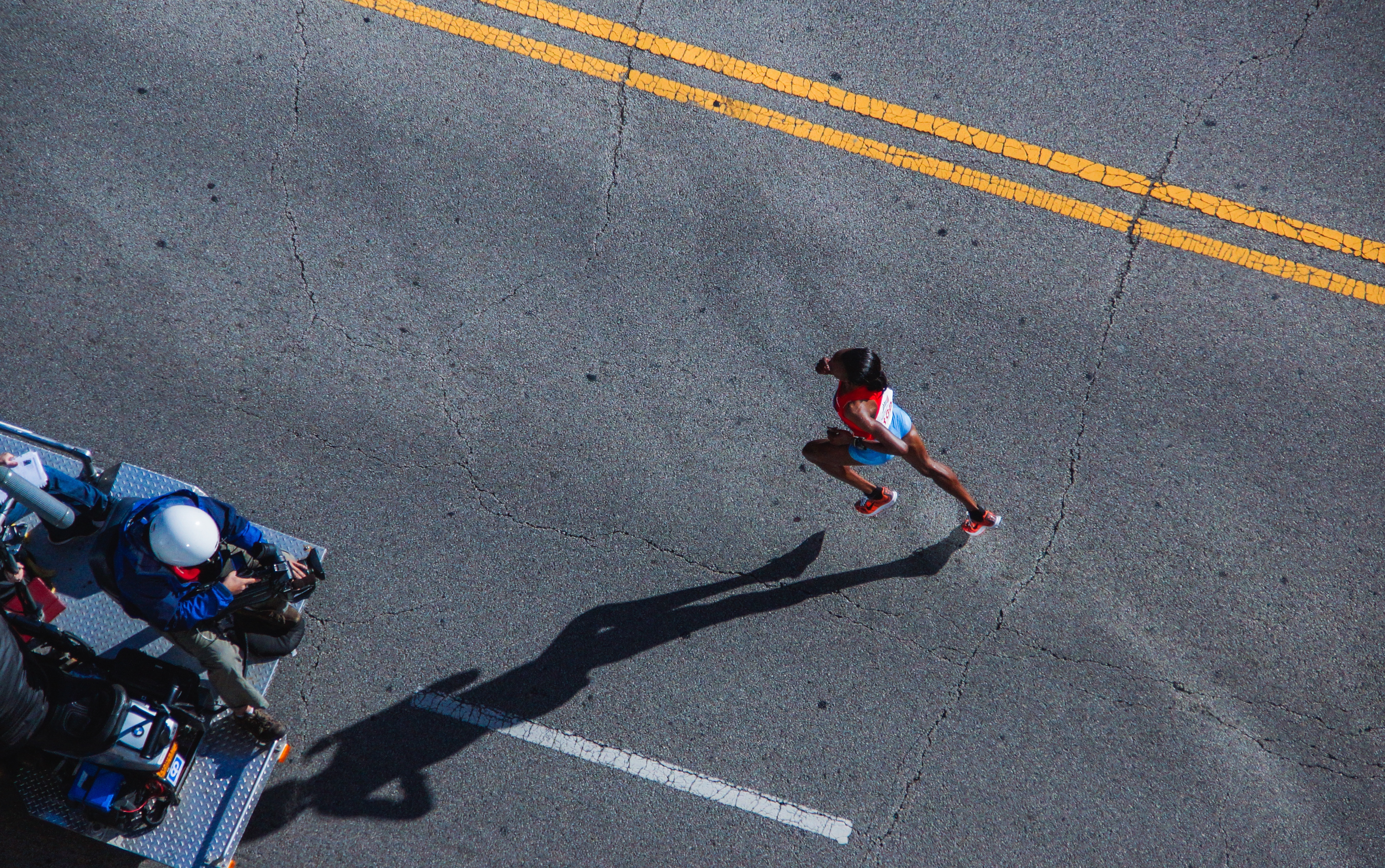
If you create for a living—whether you write, design, craft or develop–you know how difficult it is to continually produce new, groundbreaking work.
But harder still are the moments when you come up empty-handed.
Indifferent to the depths of your brilliance and the charm of your artsy Warby Parker glasses, reality will hit you with incessant, tight deadlines and a backlog of to-dos. And then you get your boss’s friendly email “just checking in” about the status of the project. Suddenly, the pit of despair in the floor opens up a little wider.
Okay, so that’s a little dramatic. But the reason creative blocks are paralyzing is that creativity is an intimate endeavor, so the inability to produce feels like a deeply personal failure. At its worst, it can make you doubt that you are even capable of creating at all (cue the downward spiral).
Stop yourself here and take the steering wheel back from your self-doubt. Ready to smash whatever’s blocking you into gorgeously imaginative smithereens?
Straight from creative gurus of all stripes at an integrated marketing agency, here are some un-blockers—what to do when you just don’t feel like you can make anything anymore. Spoiler alert: you can, and you WILL make something amazing. Soon.
Change something
- Your location. If your backdrop for creation is always your desk, your living room or the same coffee shop, get away from it. Reject the familiar to create something that’s unlike what you’ve done before. With each environment comes inspiration of a distinct flavor.
Consider what each of your senses may experience in a given place that can tie into your creation: noise levels, colors, smells. (You might even try dimming the lights – it’s been shown to affect creativity.)
- Your medium. If you’re used to having your fingers blur before you on your laptop keyboard but now find them eerily still, try one of those archaic devices that makes marks on tree scraps. Yes, you will be slower, but that may make you linger on a good word or simplify a busy layout when your hand cramps. At the very least, it will disrupt the feedback loop that has you backspacing to oblivion.
- Your standards for Draft #1. You know that hesitation that keeps you from putting ANYTHING out there because it’s not worthy yet? Shove it aside. Be brave enough to bring something crappy into existence. You can work with crappy–what you can’t work with is a blank page.
Whether it’s four shaky sketches or a typo-filled stream of consciousness, you will uncover the tiniest of gems just by making something, even when it feels like you’re pushing out sludge. Take that gem, polish it, see what’s nearby. Remind yourself: This isn’t the final product. This is how you start.
- The brief. In the agency environment, it’s likely that your brief includes a staggering amount of information. You’ve got everything from the client’s favorite color (baby pink only, please) to preferred synonyms for “innovation.” Much like word problems in math class, you don’t need all the information to solve the problem, and if you don’t ignore the extra stuff, you’re going to get lost.
Give yourself permission to ignore all but the most essential parts of the brief, at least for now. My go-to creative hack: frame the problem as a question. Condense and synthesize your assignment until it becomes something your brain can actually wrap around, like “How can we present insurance in a visually appealing way?”
Get some input
- From the world. You can’t churn out words without first absorbing some, you can’t capture the essence of an experience without having one, and you certainly can’t create visually compelling compositions without opening your eyes to what’s around you. Ideas themselves are social—they demand to connect to other inklings and concepts and dance with the backdrop of your experience. Give your brain the stepping stones between which it can leap to create something new.
Learn something, especially from an utterly foreign field. Absorb and study a genre or body of work as far from yours as possible. Then, do your darnedest to connect it to your creation. Not sure where to start? Try a TED Talk–each is a bracing vodka shot of another person’s truth. (Highly recommended and relevant: How Frustration Can Make Us More Creative.)
- From others in your field. Don’t plagiarize, of course–steal like an artist. (If that phrase is unfamiliar, stop what you’re doing and read Austin Kleon’s indispensable guide.) It’s important to soak in great work, both that of your predecessors and that of today’s rising stars. Never to superficially rip off others’ styles, but to try on a new mindset, to adapt a cool technique to fit your context, to honor and learn from someone whose work you admire.
- From someone NOT in your field. Devote no time to dwelling in your stuckness in this conversation. Instead, describe your concept or problem to a trusted friend (or stranger, if they’ll listen). Break everything down until it’s easily understandable to someone who’s not in the thick of it. With any luck, this forced simplification will get you out of the expert knots you’ve tied yourself up in. You’ll find that quite often, outsiders ask the best questions.
Move

Image credit: David Shap
- Your body. Dance, do yoga, go for a walk. Do anything except sit in your chair. This rings true intuitively but it’s also backed up by a study from Stanford, in which walking was shown to boost creativity both during the activity and shortly afterwards. (Share this with your boss and you’ll have an officially commendable reason to get your steps in. You’re welcome.)
- Your conscious attention. It’s well-documented that creative breakthroughs strike like pots boil water–unwatched. Do something useful that requires your focus but less than 100% of your creative energy, like cooking, cleaning, or watering your plants. In all likelihood, you haven’t been devoting enough time to those activities anyway. (Just me?)
There are no immediate fixes to that “blocked” feeling, but there are strategies that can help—and they are worth building into your relationship with creativity.
How do you jolt yourself back into creation mode? Share in the comments!
And if you need help choosing the best software to skyrocket your content marketing results for 2017, download our free guide with over 44 tools reviewed!
Image by Lia Leslie


